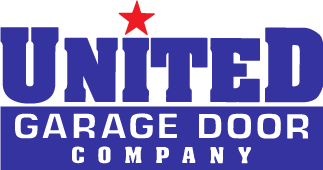A malfunctioning garage door can be a major inconvenience for homeowners. From misalignment to broken springs and noisy operation, understanding common garage door problems and their solutions is essential for maintaining the functionality and safety of your garage. In this article, we will address these common issues and provide practical fixes, helping you troubleshoot and resolve garage door problems effectively.
- Misalignment:
Misaligned garage doors can be a result of various factors, including worn-out hardware, loose tracks, or obstructions. Here’s how to address the problem:
- Inspect Tracks and Rollers: Check for any debris, dirt, or obstructions in the tracks that may be causing misalignment. Clean the tracks and ensure they are properly aligned.
- Tighten Loose Hardware: Check and tighten any loose bolts, nuts, or screws on the door and its components, including the tracks, rollers, and hinges.
- Adjust the Tracks: Use a level to ensure the tracks are plumb and adjust them if necessary. Align the tracks with the help of a rubber mallet or wrench.
- Broken Springs:
Broken springs are a common issue that can render your garage door inoperable. Dealing with broken springs requires caution and may require professional assistance:
- Safety First: Broken springs can be dangerous due to the tension they hold. Avoid attempting to repair or replace them yourself. Instead, consult a professional garage door technician who has the expertise and tools to handle spring-related issues safely.
- Regular Maintenance: Regularly inspect and maintain your garage door springs to identify signs of wear or damage. Promptly replace worn-out springs to prevent sudden failure.
- Noisy Operation:
A noisy garage door can be disruptive and indicate underlying issues. Here’s how to address the noise:
- Lubricate Moving Parts: Apply a lubricant specifically designed for garage doors to hinges, rollers, tracks, and other moving parts. Regular lubrication reduces friction and minimizes noise.
- Replace Worn Rollers: Damaged or worn-out rollers can contribute to excessive noise. Replace them with nylon or steel rollers for smoother and quieter operation.
- Insulate Metal Components: Use insulating materials, such as rubber or foam, to dampen vibrations and reduce noise caused by metal components coming into contact.
Being aware of common garage door problems and their solutions empowers homeowners to take timely action and keep their garage doors functioning smoothly. Whether it’s misalignment, broken springs, or noisy operation, addressing these issues promptly can prevent further damage and ensure the safety and convenience of your garage door.
Remember, for complex issues like broken springs, it’s best to consult a professional garage door technician to avoid any potential safety risks. Regular maintenance and inspections, coupled with implementing the provided solutions, will contribute to the longevity and reliable performance of your garage door.
By addressing common garage door problems effectively, you can enjoy the convenience, security, and peace of mind that a properly functioning garage door provides.
